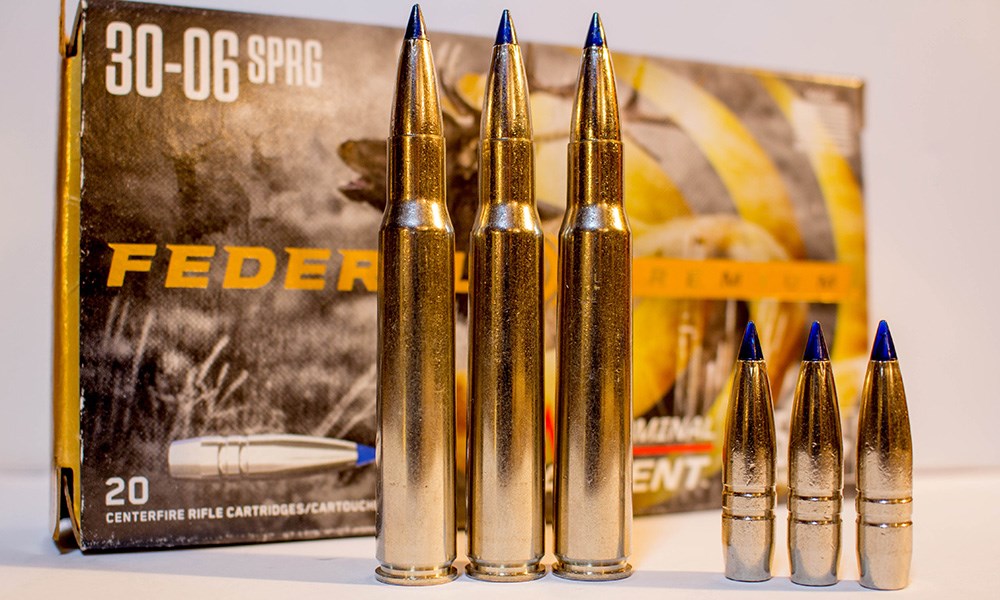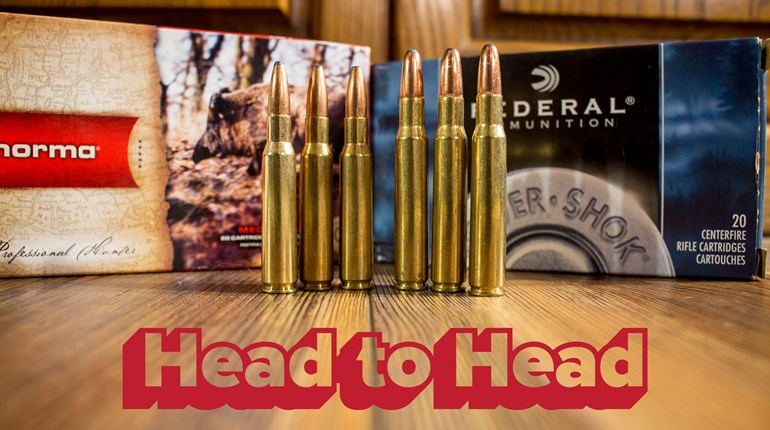
I was laying prone on the Wyoming prairie, waiting for the antelope buck to turn just a bit more broadside, and steadying the Leupold’s crosshair as best I could. I gave the hold six inches of elevation to compensate for the distance, and when the buck stopped, I sent a 175-grain Hornady ELD-X on its way to sort the buck out. The factory ammunition in the new 7mm PRC worked perfectly, giving sub-MOA groups. Eighteen months later, halfway across the globe, you’d find me in a leopard blind, watching the tom leopard of a lifetime, about to send a handloaded 286-grain bullet from the 9.3x62mm Ramirez custom rifle to put Mr. Spots in the salt.

On hunts around the world, I have used both factory-loaded ammunition, as well as handloaded stuff; while I am very passionate about handloading, I am the first to admit that the factory ammunition of the 21st century is assuredly better than it has ever been. And while costs of both factory-loaded ammo and handloading components have gone up considerably of late (tell what hasn’t?) each still has its benefits. Let’s compare and contrast both types of hunting ammunition, and see the benefits and detractions of each.
Life for me used to be simple. I owned an iron-sighted Winchester Model 94AE lever-action rifle chambered in .30-30 Winchester, and once every couple years I’d buy another box of 170-grain Remington Core-Lokt cartridges. Practice? What was that for? I’d shoot here and there throughout the year with my .22 LR, and since the deer woods limited my shots to 65 to 75 yards at best, I was good to go. Or so I thought.

My hunting horizons began to expand, and I moved to a Ruger Model 77 Mark II in .308 Winchester, as I began to hunt some old farms with open fields, and that was concurrent with my learning to handload ammunition. I couldn’t afford to buy premium ammunition—which I’d seen work so wonderfully in my father’s .308 Winchester—so dad and I decided we’d handload our ammo; I could make that which I couldn’t afford to buy. We spilt the initial costs of reloading tools, and since we both shot the same cartridge the component costs were also split. It gave me a sense of pride to take a deer with ammunition I’d cobbled together myself, but I didn’t realize that handloading would lead me to a lifetime of experimentation with a huge number of different cartridges, bullets, primers and powders.
Thirty-some years ago, when I began seriously working the press handle for the first time, the choices of projectiles were significantly fewer than we have today. Hornady was barely known as a factory-loaded ammunition company—with my only experience coming through their Frontier brand—and was best known for their component projectiles. The Barnes X bullet was virtually unknown, and the word Creedmoor was absolutely unheard of. So with a bushel basket of once-fired 308 cases and a few boxes of Hornady, Sierra and Nosler bullets, I began experimenting with different bullet weights, powders and the like. It wouldn’t be long before I’d start hunting out of my native New York, chasing caribou and moose in neighboring Quebec, and that would lead to bigger cartridges, more handloading and a borderline addiction. Africa would seal the deal, as I delved into the big-bore cartridges, where the costs often tripled, and those prohibitive costs reaffirmed the effectiveness of handloading.

Though I had surely experimented with what factory ammunition I could afford, or had access to, it was when I began to write for hunting and shooting magazines that the floodgates opened; I had access to all sorts of factory ammunition—good and bad—for testing and evaluation at the range and upon a good number of media hunts. That was eye-opening, as in my youth I could pretty well guarantee that I could handload ammunition that would outperform factory stuff. The gap closed by a decade ago; today it is very easy to find a factory load which will give excellent performance in your rifle or handgun—until it isn’t.
The 2020-2021 ammunition and component crunch was certainly an eye-opener, and solid proof that we are not guaranteed a consistent supply of ammo, or components for that matter. Even the reloading tools were unobtainable. My plan of handloading ammunition rather than rely on factory-loaded stuff was thwarted because the components became unavailable, as the companies which produce the powders, primers and quite often the projectiles, were allotting them for factory-loaded ammunition. Thankfully, I’d squirreled away enough of components and factory ammo to keep the rifles and handguns fed. But it was quite a while before the primers and powder came back on line.

I have rifles that perform wonderfully—especially for hunting scenarios—with factory loaded ammunition. Once I find that combination, I stock up with as much of that particular load as I can either afford or store, though the same can be said for reloading components. And whichever way of keeping your rifle/handgun fed appeals to you, I will advise you to stock up on what you and your guns like.
Factory ammo is the low-hanging fruit; you simply make the purchase and you’re good to go. I’ve had some companies change the loads without notice (I was seriously scratching my head as to what could’ve happened to my rifle, until I found an old box and saw the difference), and I've recently had several of my favorite factory loads be discontinued. But generally speaking, factory ammo is a quick, easy, and sensible solution, though not necessarily the best one.

Handloading ammunition requires a healthy investment into reloading tools, components and your valuable time. It won’t take long to amass a costly press, scale, trimmer, powder thrower and a set of dies for each cartridge you intend to reload. Many find it to be an enjoyable hobby, being not only fun but fruitful. I like the ability to fine-tune my ammunition to best serve the firearm. I also like having the ability to use many of those component projectiles which are not loaded in factory ammo, or creating ammunition for cartridges that are no longer produced. From the .338-06 A-Square, to the .318 Westley Richards, to the .30-338 Winchester Magnum, to the .510 Wells, through handloading these rifles can be kept alive.

One of the other most important benefits of handloading your own ammunition often comes to the forefront accidentally. I found that because I was constantly at the bench, evaluating the performance of my handloads, tweaking this or that to get things just right, I ended shooting a whole lot more. More shooting usually equals a better shooter, and I am happy to hedge my bets any way I can. I become much more familiar with the firearm, and it lends a sense of confidence that I truly appreciate. I can’t say the same for the guns I shoot factory loads; for some reason once I know I've got a factory load that performs well, I tend to leave things be. Perhaps I just feel that the rifle is sorted, I don’t know.
The price differential probably won’t show itself in many of the most common calibers like the .30-06 Springfield, .308 Winchester, .223 Remington and 9mm Luger, where good surplus ammunition is affordable, but if you have a rarity or one of the big bores which you like to shoot regularly, handloading sure can be appealing. For example, ammunition for my Heym 470 NE double rifle can run between $12 and $16 per cartridge. I can cut those costs down considerably through handloading, despite the increased cost of equipment and components for the big girl. It actually makes the difference between being able to practice frequently and watching that rifle pout in the gun cabinet.

If you’re a recreational hunter, who enjoys a few days afield each year, perhaps handloading isn’t for you. Using such a small amount of ammunition might not warrant the effort or investment involved with handloading. If you are a frequent shooter, one who takes full advantage of season ranging from predators to varmints to spring bear and the fall classics, with a number of different calibers—handloading might make complete sense. Some folks view handloading as dangerous, and it can be if extreme care isn’t taken; but then again, so can a rifle or handgun. I will assume that you will be as diligent with handloading safety—following the correct procedures outlined in books and reloading manuals, and staying within safe limits—as you are with firearm safety. I’ll leave you with this warning, after three-plus decades at the reloading bench: what may seem like a hobby at first, can quickly lead you down the rabbit hole. I'm completely okay with that.



































